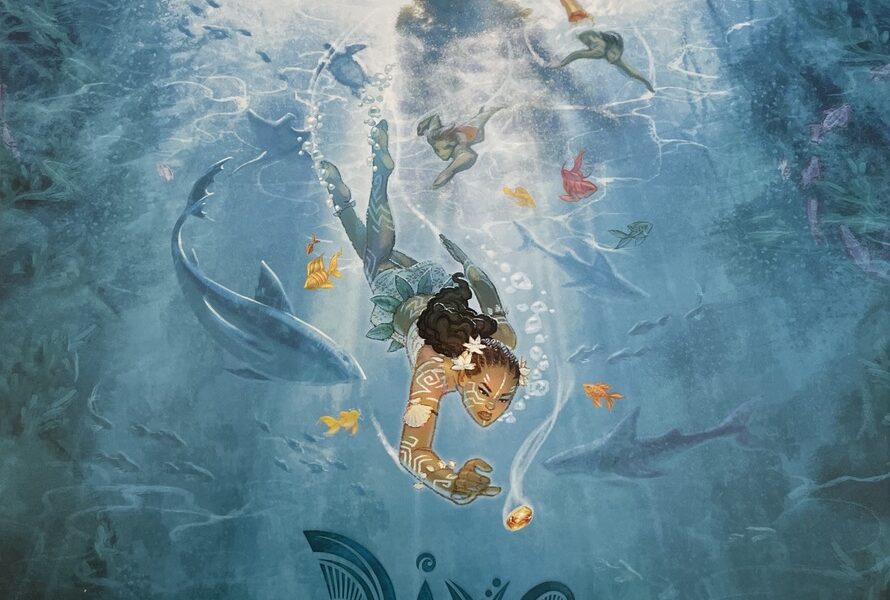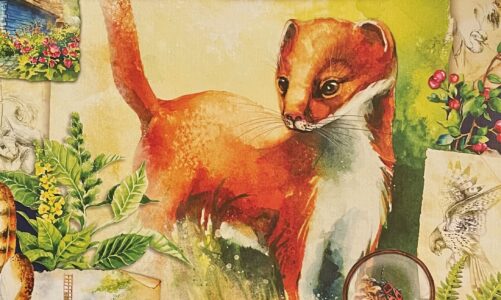Today we take a look at Dive, created by Anthony Perone and Romain Caterdjian. Art by Alexandre Bonvalot. This is a board game that is described as an “observational programming game.” I don’t mind a board game with a gimmicky element, so when I saw the “board” for Dive was actually a stack of clear plastic squares designed to mimic the layers of the ocean, I was immediately intrigued. Dive also looked like it had the potential to be fun for the whole family.
What’s Dive the board game all about?
Imagine you are a diver on the remote island of Windbark. During a game of Dive, you will be taking part in a competition to see who can retrieve a sacred stone that’s been ceremoniously tossed to the bottom of the ocean. As you descend through the layers of the ocean, you will encounter some friendly helpers. such as the manta ray and sea turtle, but beware, there are sharks in the waters that you’ll need to carefully avoid.
Through each round of game play, divers will need to properly guess which layers of the ocean have sharks. Players who can also identify which layers have manta rays and sea turtles will descend faster than the rest of the competition.* The first to claim the sacred stone from the bottom of the ocean (aka level 23 on the descent board) wins!
Sounds interesting, right? It totally is!
*There is a bidding element in Dive the board game that adds some extra strategy to the game. This applies to the manta rays and sea turtles specifically, and is discussed in greater detail below!
Components
Inside the box you’ll find all sorts of wonderfully crafted components. The most interesting being the clear square tiles that you’ll shuffle all about to create the ocean for your game. You will need to punch out the cardboard pieces that form the stand for the ocean tiles, but this is a step you only have to complete once. Sit Down! Games has done an awesome job providing an insert for Dive that neatly stores all the components, including the frame for the ocean once it’s been built.
Each player will also have a game board, privacy screen, and a color-coded shell to represent their player color. Players will also receive 5 wooden air tokens labeled 1-5. There is also a descent board that is used to track scoring throughout the game.
There are several other components that are used for the different variants that have been included in the game.
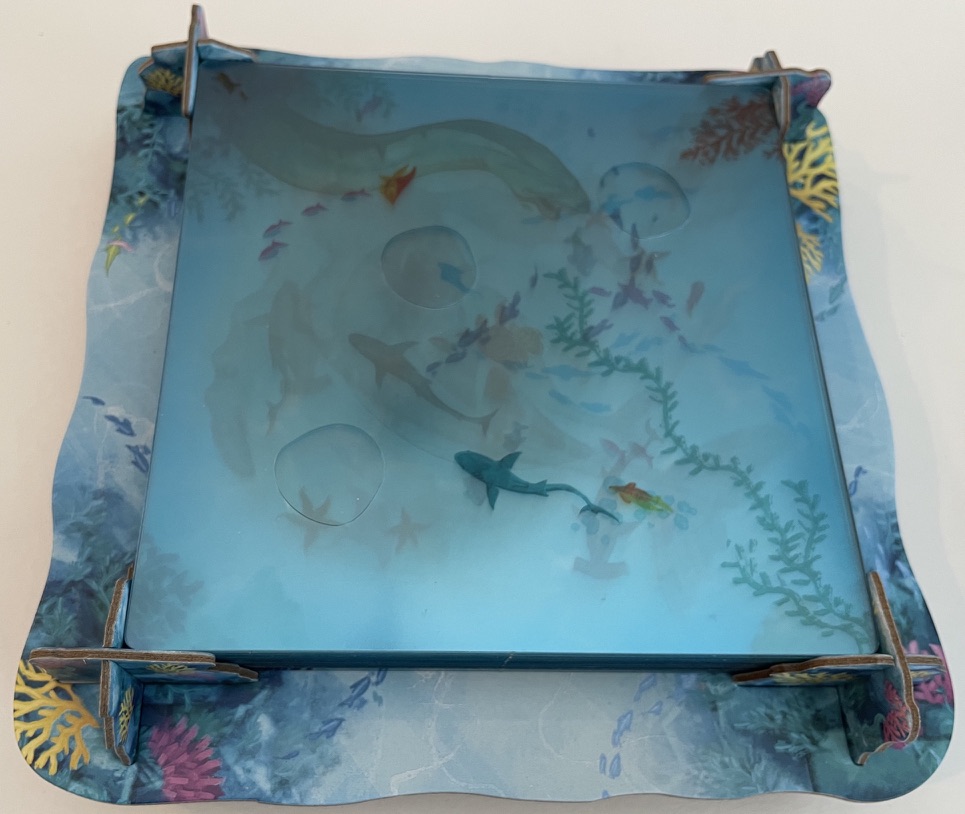

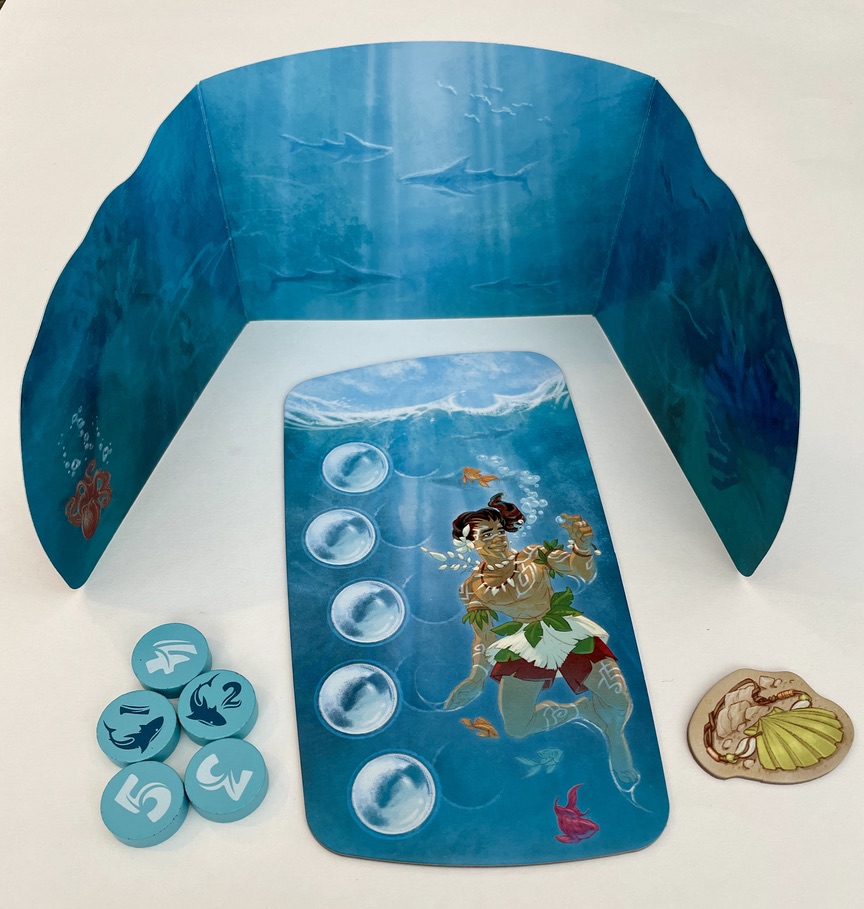
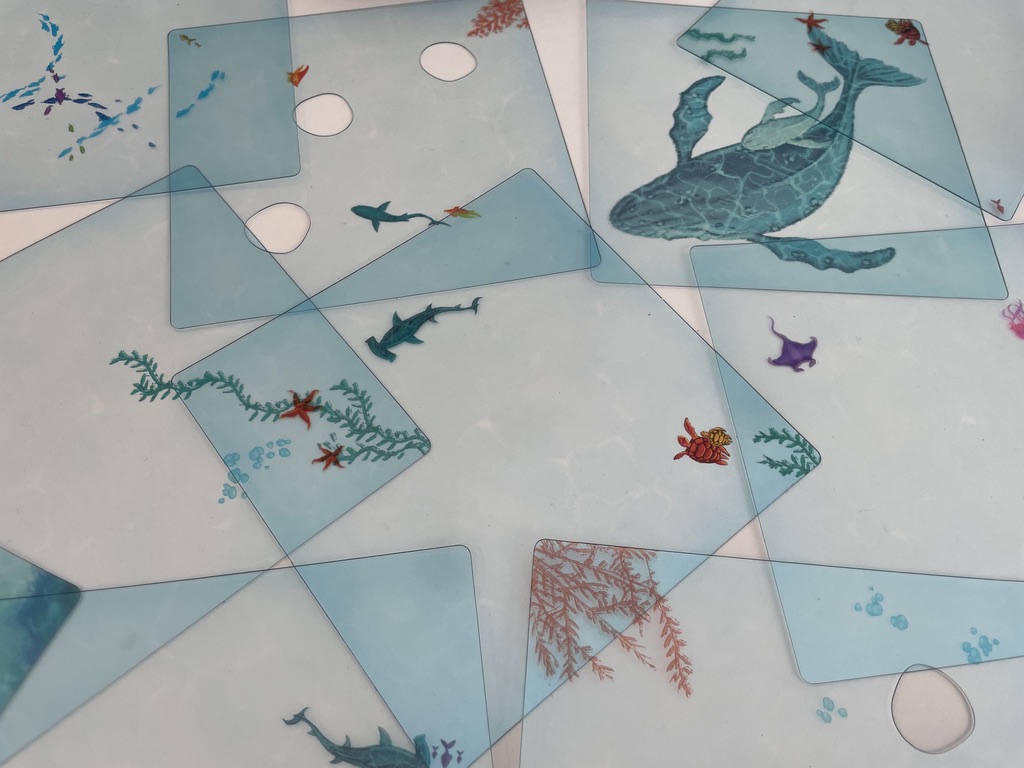
A look at the beautiful components for Dive the board game.
Before You Play
I’ll be honest. I dove right into this game, and it did not go well. I highly recommend that you take several of those ocean layer tiles and study how they look before you attempt to play. Carefully look at the little details you see when the shark is on the top layer, or maybe the fourth layer. Once you have a general feel for how the tiles look, your gaming experience will be a lot less punishing.
How to Play Dive the Board Game
Each round of Dive consists of 3 phases.
Phase 1: Programming
This is the part of the game where you secretly study those ocean layers. Using your air tokens, you will make note of what you see in the ocean on your player board. If you see a shark on layer one, flip your air token to the shark side and place it on the first row of your board. If there’s no shark, flip your air token to the number only side. This is the primary objective of the game! Identify which layers of the ocean have sharks.
In addition to sharks, you will also look for layers with sea turtles and manta rays who can help you dive faster. Do you like to bet? Dive has a betting mechanic in it. Only one person can claim these friendly helpers on any ocean level. The numbers you see on the air tokens represent their value. The person with the highest value air tokens wins the helpers. If you really want to increase your odds of winning, stack your air tokens together to create a higher value. Be warned: If you choose to stack air tokens, you will not be able to dive 5 layers that round!
Phase 2: The Dive!
Now it’s time to determine if your program from phase 1 is correct. Start by removing the top layer from the ocean and identify what animals are on it. If your program says there is a shark on layer 1, and there is a shark on layer 1, you get to advance to the next step. If you’re wrong, your round is over and the rest of your program is not evaluated. Brutal, right!
If you got the shark portion right of this phase, now you can determine who wins the help of the sea turtles or manta rays if they’re present. The person who has programed the highest valued air token for the layer wins! Immediately advance your diver (For example: If you scored a green sea turtle, you would dive one level deeper on the descent board).
This process continues until all eligible programs are evaluated!
Phase 3: Time to Rest
Count up how many levels you correctly evaluated during phase 2. Move your diver that many levels deeper on the descent board.
You’ll simply place your 5 air tokens off to the side of your player board and start the next round with phase 1. Play continues until a diver descends to level 23!
A Variant for Kids
One of the things I enjoyed most about this game was the variant for kids. This is a just a super simplified version of Dive. Players need to determine if there’s a shark on each layer, or not! Even if you’re wrong, you still get to evaluate the rest of your levels. No frustration or complicated rules to follow!
The Solo Variant
I always love a board game that has a solo variant. Not all of them are great, but the solo variant in Dive is defintely fun to play. You’ll get to challenge the automated Village Chief in this race to the bottom of the ocean. I warn you now though, the Chief is always right about the location of those pesky sharks. This means there’s little room for error when you’re observing and programming each round.
The Wrap Up
Yes, we’ve enjoyed our time with Dive the board game so far. It’s a light-hearted, entertaining game that seems to appeal to everyone here. It’s easy enough for kids to play, but engaging enough to hold the adult’s attention too. This is probably not a game you would want to play every night. I do think Dive has the potential to become repetitive, but add it to a rotation of games and I think it will shine.

